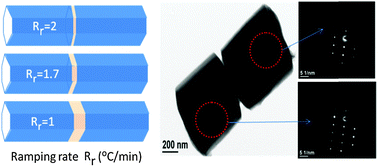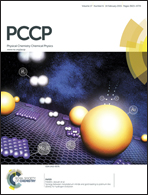Nanoscale interface engineering in ZnO twin nanorods for proposed phonon tunnel devices†
Abstract
Zinc oxide twin nanorods, with two identical crystalline sections connected by an amorphous layer, were reproducibly grown using a simple one-step hydrothermal technique. The thickness of the amorphous layer between the crystalline segments was tunable with growth parameters, as confirmed by high resolution transmission electron microscopy. The photoluminescence spectra of these twin nanorods exhibit strong near band edge emission in the UV range, with convoluted phonon sidebands. De-convolution analyses of these spectra showed that the amorphous interlayers act as effective phonon barriers beyond a certain thickness. Such oriented grown individual crystalline–amorphous–crystalline structures may be a suitable test system for fundamental studies of phonon tunneling in the nanostructure. While physical vapor deposition techniques are seriously constrained in realizing crystalline–amorphous–crystalline structures, our results show the viability of engineering embedded interfaces via chemical routes.


 Please wait while we load your content...
Please wait while we load your content...